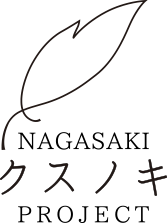



he tree can currently be viewed in the grounds of the former Shiroyama National School Building
Tree data
Variety
Karasuzansho (ailanthus-like prickly ash, Zanthoxylum ailanthoides)
Height
Around 6m
Trunk circumference
Around 1m at chest height
Owner
Nagasaki City
The Shiroyama Elementary School, the grounds of which include part of the ruins of the old building, is on a low hill of around 17 meters in height to the west of Nagasaki Peace Park, separated by the Urakami River. At the time of the atomic bombing the school was called "Shiroyama National School," and around 1,500 children were enrolled at it.
Built in the year 1923, the Shiroyama National School building was constructed in ferro-concrete, which was uncommon at the time. The school had a reputation for the high rate of students progressing to junior high schools (present day high schools) and its balancing of both study and sports.
However, towards the end of the war the studies of the children became under the tonarigumi system (effectively sub units of the wartime national mobilization neighborhood associations composed of five to ten households), and the classrooms were used as offices by the Mitsubishi Arms Factory.
Since Shiroyama National School was situated very close to the hypocenter, just 500 meters to the west, the atomic blast either destroyed or burned down all the structures at the school apart from the main ferro-concrete building, taking the lives of 130 teachers, Mitsubishi Arms Factory employees and mobilized students. It is believed that a further 1,400 school children in the area were also killed.
Although the tree was on the northern slopes of the Shiroyama Elementary School and therefore not directly facing the atomic exposure and hypocenter, it was greatly damaged by the fierce heat rays and blast wave. Bark was stripped of the tree and lay around its surviving trunk, and the tree bares the scars of fire. Nonetheless, it subsequently started to shoot new buds and came back to life. The painful look of the ailanthus-like prickly ash is something that transmits the terror of the nuclear bombing damage but, at the same time the muku tree (Apanthe aspera) that grew up next to the prickly ash after the war and looks as though it is supporting the tree has become a theme for peace and human rights education aimed at children.
However, the tree was weakened by record snowfalls and long periods of cold temperatures in January 2016; there were no signs of buds sprouting in the spring, and the tree was declared dead in July 2016. Despite this, due to the fact that many local people and children have cared for the tree over the years, that it was a bombed tree serving as a symbol, and a tree that taught much about peace, it was transplanted to the grounds of the former Shiroyama National School Building. It stands today baring the scars of the atomic bombing in a message to many of the children and citizens of Nagasaki City.